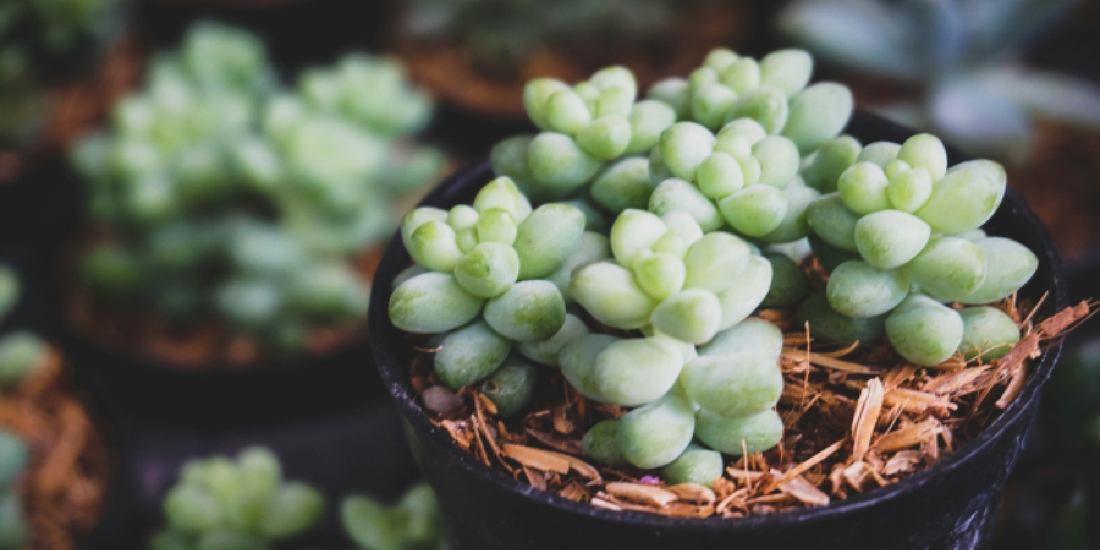
The Everyday Science of Growing Green Indoors
Share
If you pause for a moment in any city today, you’ll notice the same quiet craving — people bringing bits of nature back into their living spaces. Pothos winding down bookshelves, herbs sprouting in kitchen corners, succulents basking beneath artificial light. We are rediscovering that our homes feel incomplete without living things.
Yet, as apartments get smaller and daylight grows rarer behind glass towers, many plant lovers struggle with a simple question: how do you keep nature alive indoors?
That is the question the team at amoyls set out to answer when designing the VerdantGlow S-Shaped 8-Tier Plant Shelf with Grow Lights — a sculptural system that combines physics, biology, and a sense of calm beauty. To understand why it matters, we need to look at how light, design, and daily life intersect.
1. Why Humans Need Green in the First Place
Plants do more than decorate. They connect us to natural cycles that our bodies subconsciously recognize. Studies in environmental neuroscience show that even brief exposure to greenery reduces cortisol levels and restores focus. Offices with plants record up to 15 percent higher productivity; homes with indoor gardens show improved emotional balance.
What we call biophilic design — creating environments that echo nature — is now shaping architecture, retail, and home décor. A vertical plant shelf with integrated lighting is a miniature expression of that philosophy: small space, full ecosystem, endless calm.
2. The Hidden Language of Light
Every green leaf is a tiny solar panel. Through photosynthesis, plants transform light into energy, producing the oxygen we breathe. But not all light sources are equal. Sunlight delivers the full spectrum of wavelengths; indoor bulbs rarely do.
Blue light (around 450 nm) encourages leaf development, while red light (around 660 nm) stimulates flowering and root strength. Without the right mix, plants may stretch, fade, or stop growing altogether.
That’s why amoyls VerdantGlow uses calibrated LEDs that simulate the daylight spectrum. The light is soft enough for the eyes yet tuned precisely for chlorophyll absorption. It’s a balance between science and serenity — your living room glows gently while your plants thrive.
3. The Art of the “S”
The first thing you notice is the curve. Unlike rigid ladders or boxy racks, the S-shaped frame flows like a living vine. Each tier twists slightly away from the next, allowing light to cascade evenly from top to bottom.
Designers at amoyls studied how natural canopies distribute light among leaves. The resulting geometry isn’t just elegant — it’s functional. Air circulates freely, moisture doesn’t trap, and every pot receives its own sunlight equivalent.
Form follows photosynthesis. The shelf looks alive even before you add a single plant.
4. Eight Tiers of Possibility
Think of each level as a small biome. Herbs and microgreens on the top tiers soak up stronger light; mid-tiers host trailing ivy or peace lilies; lower shelves cradle ferns or moss that prefer shade.
The VerdantGlow structure holds up to eight distinct ecosystems, transforming a single corner into a vertical garden. Its reinforced steel frame supports heavy ceramic pots without wobble, and the matte coating resists humidity and rust.
For those who live in studio apartments or compact homes, it replaces an entire balcony garden. Space-saving meets soul-soothing.
5. Everyday Science: Photosynthesis Indoors
Here’s what happens when you switch on those grow lights:
- Photons strike chlorophyll molecules inside leaves.
- The energy splits water molecules into hydrogen and oxygen.
- Hydrogen combines with carbon dioxide to form glucose — plant food.
In nature, this process stops after sunset. Indoors, you control the day length. With a timer set to 12 hours, your plants experience endless spring. That’s why even beginners notice faster growth and richer color.
You don’t need a botany degree — just the right light in the right place.
6. The Wellness Connection
Owning a plant shelf is not only about cultivating greenery; it’s about cultivating yourself. Watching growth unfold slows down the rhythm of the day. Watering becomes a morning meditation; pruning becomes mindful art.
Psychologists call this tend-and-befriend behavior: caring for another living being stabilizes mood and fosters resilience. The amoyls VerdantGlow makes this practice effortless — no guessing about sunlight, no frustration with dark corners.
As the glow fills your space, it also fills a subtle emotional gap created by screens and artificial environments. Light nurtures both chlorophyll and calm.
7. How the Lights Stay Gentle Yet Powerful
Older grow lights often bathed rooms in harsh purple hues. The latest amoyls LEDs use a balanced full-spectrum blend, merging white, red, and blue wavelengths into a natural daylight tone (around 4000–4500 K).
The result: your plants photosynthesize efficiently, and your home still feels cozy. The lights run cool to the touch, consume little electricity, and last over 50,000 hours — that’s nearly six years of daily use.
Each tier’s panel spreads light evenly so lower plants no longer languish in shade. You can finally arrange by aesthetics, not just survival.
8. Design That Grows With You
The VerdantGlow’s modular concept means it adapts as your collection expands. Start with a few succulents, then add culinary herbs, flowering vines, or small bonsai trees. Every shelf has ample headroom for vertical growth, and detachable trays make re-potting easy.
Homeowners use it differently:
- Urban gardeners treat it as a vertical farm for lettuce and mint.
- Design lovers style it as a luminous sculpture beside sofas or art walls.
- Families use it as an educational project — kids learn how light creates life.
In each case, the shelf becomes more than furniture; it becomes a quiet ecosystem you curate.
9. Sustainability by Design
At amoyls, sustainability starts with materials. The frame’s powder coating avoids volatile organic solvents. The LED modules are recyclable, and packaging is flat-packed to minimize shipping emissions.
But the deeper sustainability lies in longevity. Products that last longer prevent waste. The VerdantGlow’s structure and lighting system are engineered for years of performance without replacement parts. Using low-voltage power, it consumes less energy than a laptop charger while keeping dozens of plants healthy year-round.
You save on electricity, replacement bulbs, and — most importantly — environmental cost.
10. Light as Part of Interior Design
Lighting designers talk about layering light — combining ambient, task, and accent sources to shape mood. The VerdantGlow contributes all three. Its soft white glow doubles as ambient light at night; the directional LEDs highlight textures and foliage like an art gallery.
Place it near a reflective wall to amplify brightness, or let the curve stand alone as a centerpiece. Many users position it beside reading corners, where its radiance blends with warm table lamps.
The fusion of biophilic and minimalist aesthetics turns your plant corner into a living sculpture — one that breathes and grows.
11. Caring Made Simple
Maintenance is the barrier that stops most people from starting indoor gardens. amoyls solves that with intuitive features:
- Timer Control: automate sunrise and sunset cycles.
- Moisture-Resistant Coating: no rust or stains.
- Detachable Trays: easy cleaning and watering.
- Stable Base: prevents tipping even when fully loaded.
You can water freely without worrying about floor damage. Even first-time growers achieve success because consistency — not complexity — is what plants crave.
12. Light Across the Seasons
Indoor environments don’t follow natural seasons, but plants still sense temperature and light shifts. The VerdantGlow ensures continuity through all months:
- Winter: compensates for short days and low sun angles.
- Spring: jump-starts seed germination.
- Summer: maintains growth when heat forces curtains closed.
- Autumn: supports flowering cycles and propagation cuttings.
This means you can harvest basil in December or watch African violets bloom through cloudy weeks. Seasonal change becomes a creative choice, not a limitation.
13. The Social Life of Plants
Something magical happens when greenery gathers in one spot — it becomes social. Guests pause to ask names of plants, share stories of failed cacti or thriving ferns. The VerdantGlow turns that social curiosity into a design conversation.
In co-working spaces and cafés, it functions as a living partition. In homes, it’s a storytelling wall — proof that technology and nature can coexist gracefully.
As cities grow denser, such interactions remind us that caring for life is still possible, one shelf at a time.
14. Practical Tips for Beginners
- Start small. Choose hardy species like pothos, snake plant, or spider plant.
- Use good soil. Well-draining potting mix prevents root rot.
- Set consistent light hours. 10–12 hours daily is ideal for most indoor plants.
- Observe leaves. Pale color = too little light; brown tips = too much.
- Rotate pots. Promotes symmetrical growth and prevents leaning.
- Clean light panels monthly. Dust reduces brightness.
- Enjoy the ritual. The goal isn’t perfection but presence.
15. Why the Future of Home Design Is Green
Urban life is entering a new era where nature must fit inside human-made boundaries. Climate uncertainty, limited land, and mental fatigue drive a universal need for indoor biophilia. Products like the amoyls VerdantGlow are early glimpses of that future — homes that photosynthesize, furniture that sustains life, interiors that heal as much as they impress.
As more people work remotely and spend 90 percent of their time indoors, integrating plant life becomes both aesthetic and ethical. The next decade will blur the line between décor and ecology — and that’s something worth celebrating.
16. A Light That Grows With You
At its core, the VerdantGlow S-Shaped 8-Tier Plant Shelf with Grow Lights is not just a product; it’s an idea — that technology can nurture rather than replace nature.
It’s for the architect chasing balance between steel and soil, the student in a sunless dorm who misses fresh air, the busy parent teaching a child where food begins, the artist who wants inspiration that breathes.
When you switch on that gentle glow at night, you’re not just lighting plants; you’re lighting a promise — that even in artificial spaces, life finds a way to grow.
